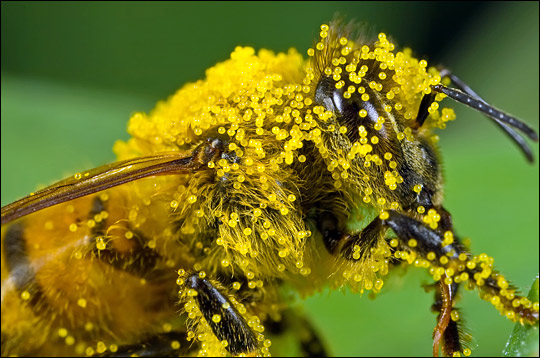Make sure the [rows] run parallel
and still maintain right angles with the boundary lines.
He advocates crop rotation.
While your land gets a chance to rest by changing crops
don’t think that all the while your fallow isn’t earning a return.
Virgin devotes an entire book, 568 lines of poetry, to the habits and proper care of honeybees. He describes foraging bees as :
youngsters who haul themselves back home exhausted
leg baskets loaded down with thyme.
The “thyme” carried in “leg baskets” is not the actual herb, but pollen from the herb’s flowers. During a gathering journey, a bee moves among many flowers of the same species. An herb such as thyme is a favorite. On her rounds, she (since all worker bees are females) carries pollen from one thyme plant to the next.
 |
But not all pollen stays behind in the field. Surplus amounts remain on the forager’s legs. When she returns to the hive, these grains are removed by other worker bees and stored in wax cells as food for newly hatched brood.

No comments:
Post a Comment